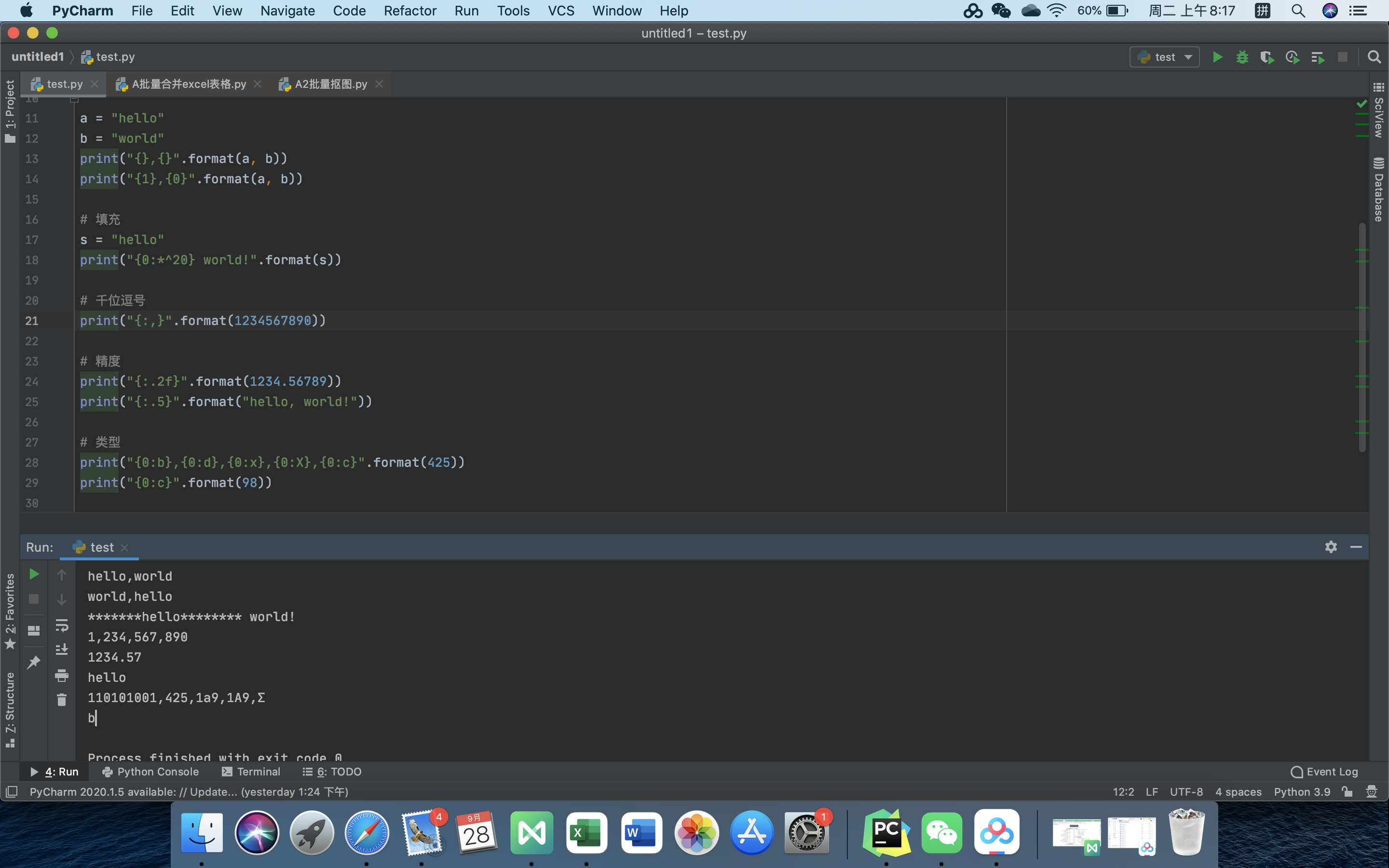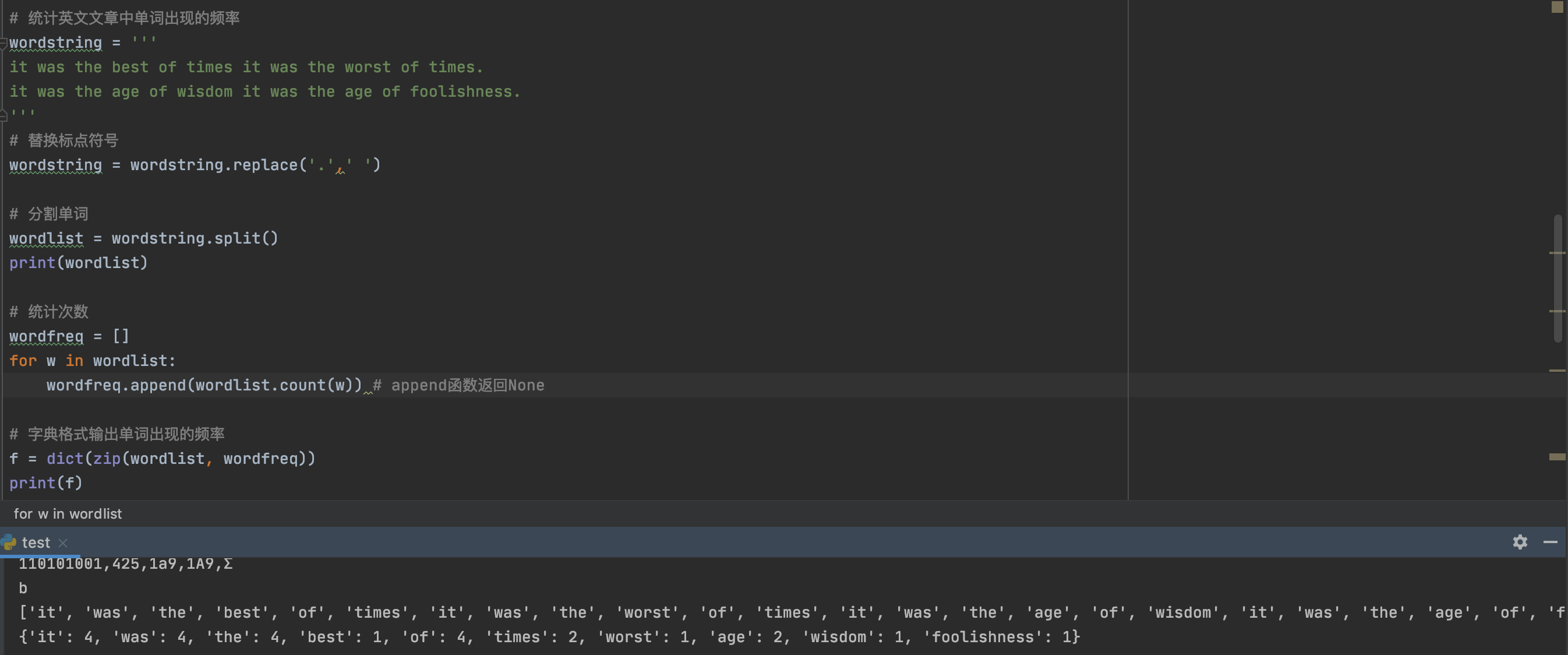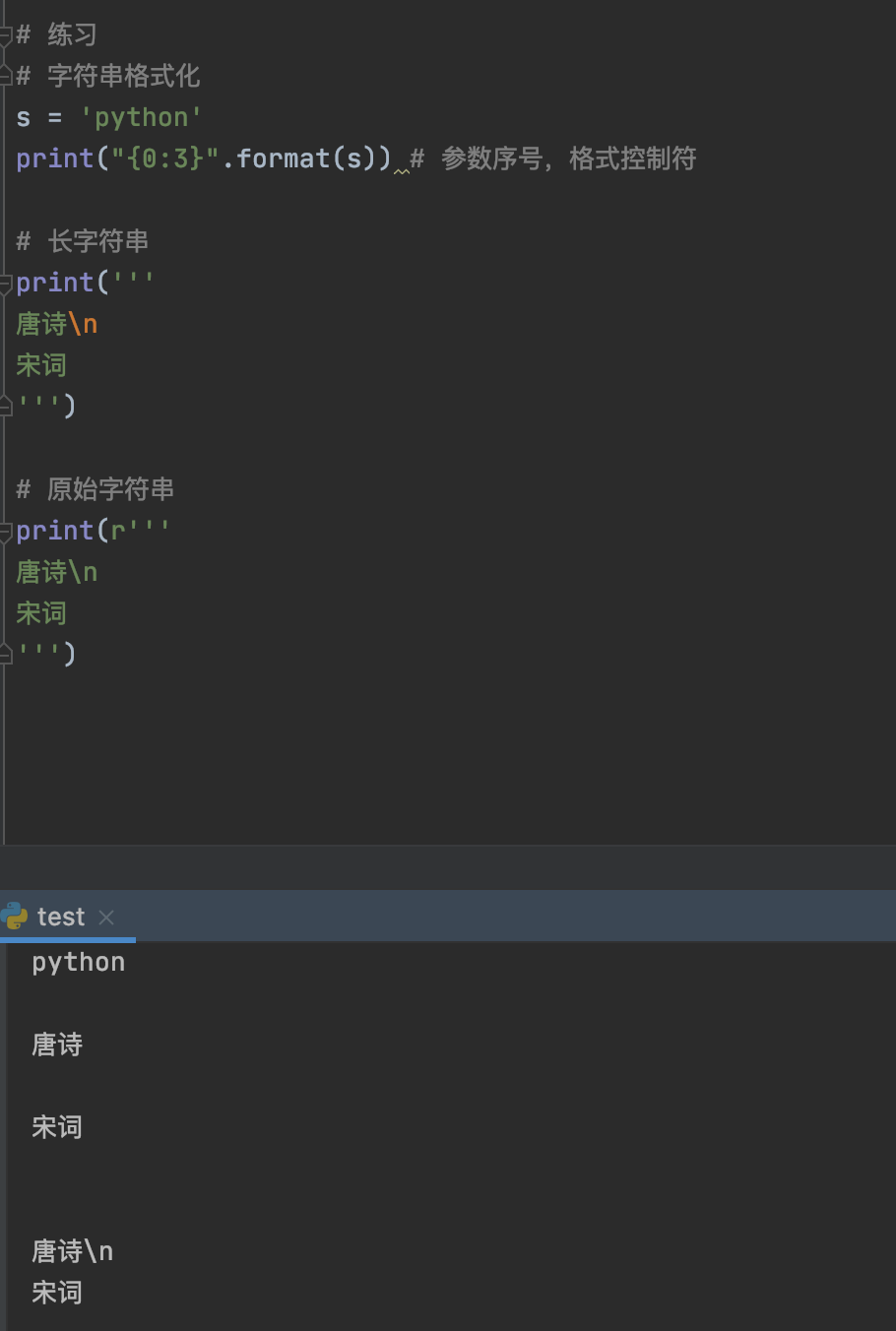【python学习笔记】字符串格式化
# 字符串格式化
'''
{参数序号:格式控制标记}
填充 对齐(< > ^) 宽度 逗号 精度 类型
'''
a = "hello"
b = "world"
print("{},{}".format(a, b))
print("{1},{0}".format(a, b))
# 填充
s = "hello"
print("{0:*^20} world!".format(s))
# 千位逗号
print("{:,}".format(1234567890))
# 精度
print("{:.2f}".format(1234.56789))
print("{:.5}".format("hello, world!"))
# 类型
print("{0:b},{0:d},{0:x},{0:X},{0:c}".format(425))
print("{0:c}".format(98))

练习题:
# 统计英文文章中单词出现的频率
wordstring = '''
it was the best of times it was the worst of times.
it was the age of wisdom it was the age of foolishness.
'''
# 替换标点符号
wordstring = wordstring.replace('.',' ')
# 分割单词
wordlist = wordstring.split()
print(wordlist)
# 统计次数
wordfreq = []
for w in wordlist:
wordfreq.append(wordlist.count(w)) # append函数返回None
# 字典格式输出单词出现的频率
f = dict(zip(wordlist, wordfreq))
print(f)

# 字符串格式化
s = 'python'
print("{0:3}".format(s)) # 参数序号,格式控制符
# 长字符串
print('''
唐诗\n
宋词
''')
# 原始字符串
print(r'''
唐诗\n
宋词
''')





 浙公网安备 33010602011771号
浙公网安备 33010602011771号